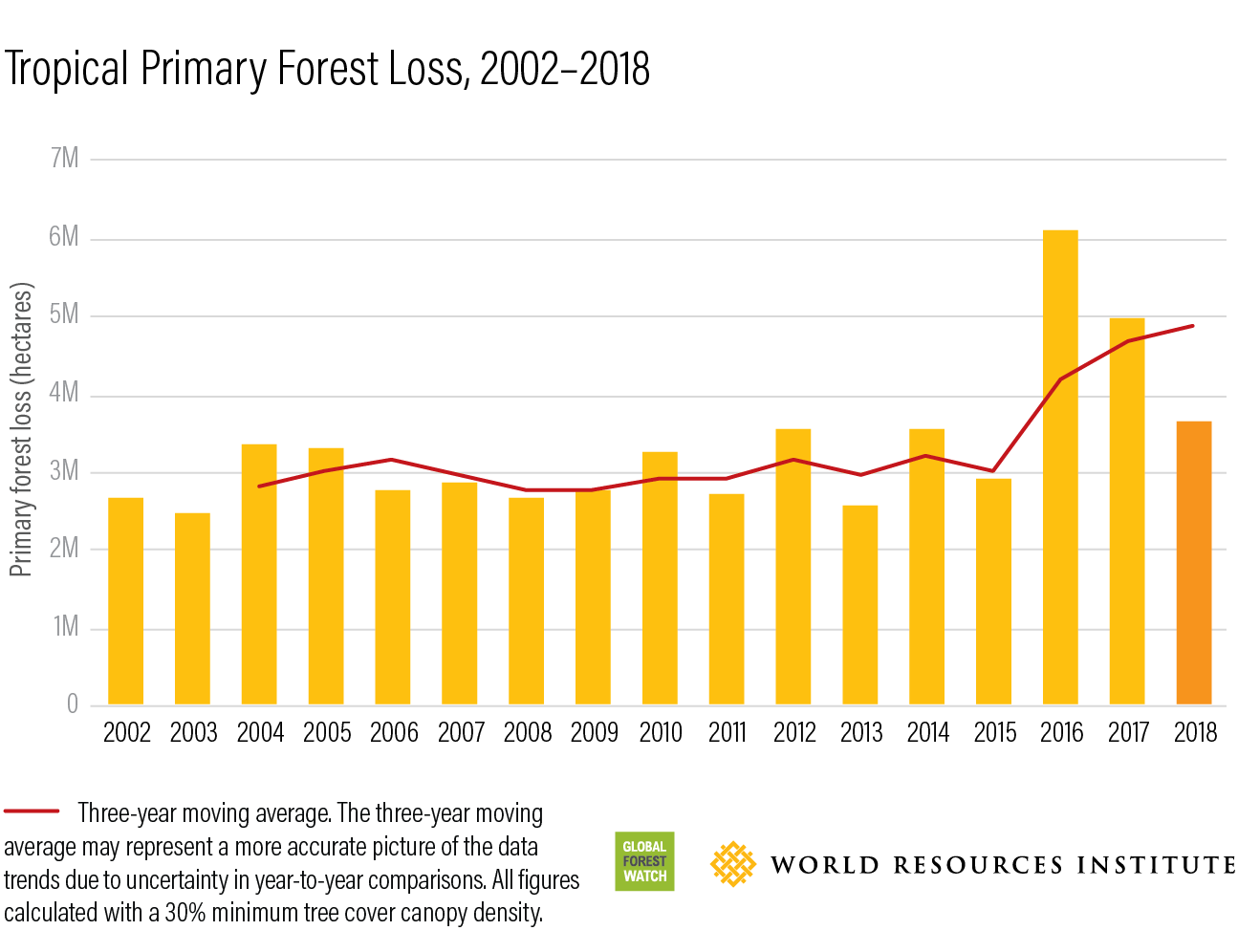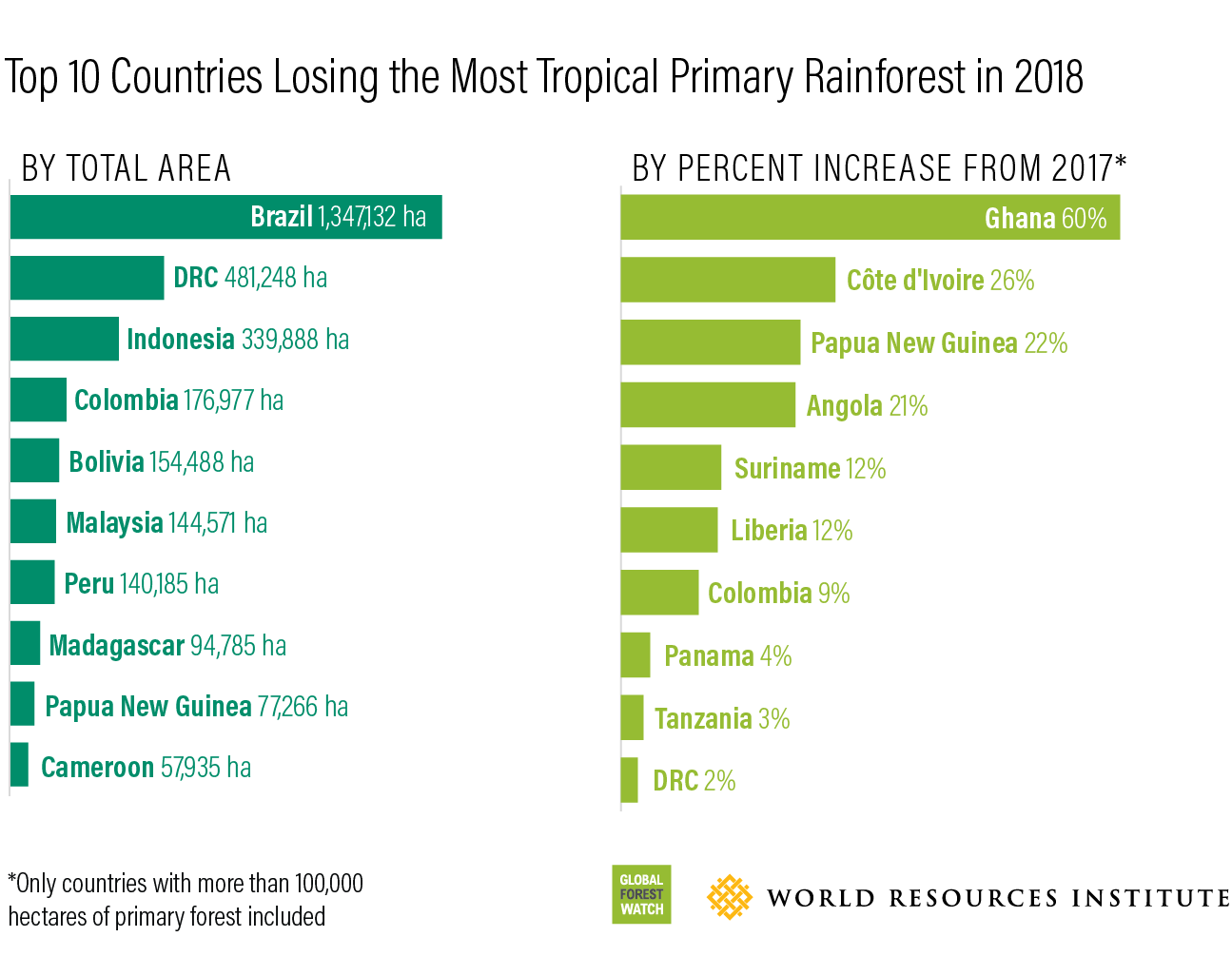In an alarming news, the planet lost 12 million hectares of forest in 2018; of which 3.6 million hectares, an area the size of Belgium, were primary forests (biodiversity hotspots that contain trees that can be hundreds or even thousands of years old and provide habitat for a vast array of wildlife including orangutans, mountain gorillas, jaguars and tigers).
According to a satellite data compiled by research group Global Forest Watch and analysts at the University of Maryland, Ghana is losing its rainforest faster than any other country in the world. There was a 60% increase in Ghana’s primary rainforest loss in 2018 compared to 2017, the highest in the world. In the Democratic Republic of the Congo, primary forest loss was 38% higher in 2018 than it was from 2011-2017.

While expansion of small-scale forest clearing for agriculture and firewood is thought to have caused about three-quarters of primary forest loss in the DRC, Ghana recorded the biggest percentage rises in rainforest destruction driven by gold mining, illegal logging, and cocoa farming.
Illegal small-scale mining, known locally as “galamsey”, has caused massive environmental damage in Ghana, which the government estimates would cost $29 billion to help restore. Land clearing for timber exportation is also rampant and hunting puts pressure on native species of various habitats in Ghana’s once-expansive rainforest.
Local environmentalists fear the 23,000-hectare Atewa Forest Reserve in Ghana’s Eastern Region will be under threat of deforestation after the government agreed to a $2 billion deal with China to exchange bauxite for infrastructure projects.

Brazil and Indonesia, which accounted for 71% of the tropical primary forest loss in 2002, accounted for 46% of total loss in 2018. The destruction of Indonesia’s pristine forests was driven by palm oil plantations, while clear-cutting of primary forest by loggers and cattle ranchers in Brazil dominated the destruction.
Primary forests store the most carbon; their destruction is seen as largely irreversible, even over decades. Frances Seymour from the World Resources Institute, part of the Global Forest Watch network, observed:
“We are nowhere near winning this battle. It is really tempting to celebrate a second year of decline since peak tree cover loss in 2016 but, if you look back over the last 18 years, it is clear that the overall trend is still upwards. The world’s forests are now in the emergency room – it is death by a thousand cuts. Band-Aid responses are not enough. For every hectare lost, we are one step closer to the scary scenario of runaway climate change.”
Earth has lost over half of its original #rainforests to human activities. Indigenous environmentalists like William are the frontline of #ClimateAction. He protects ?? in the #AmazonRainForest from illegal logging & mining. #EarthDay pic.twitter.com/kWHqCUdkod
— UN Development (@UNDP) April 20, 2019






